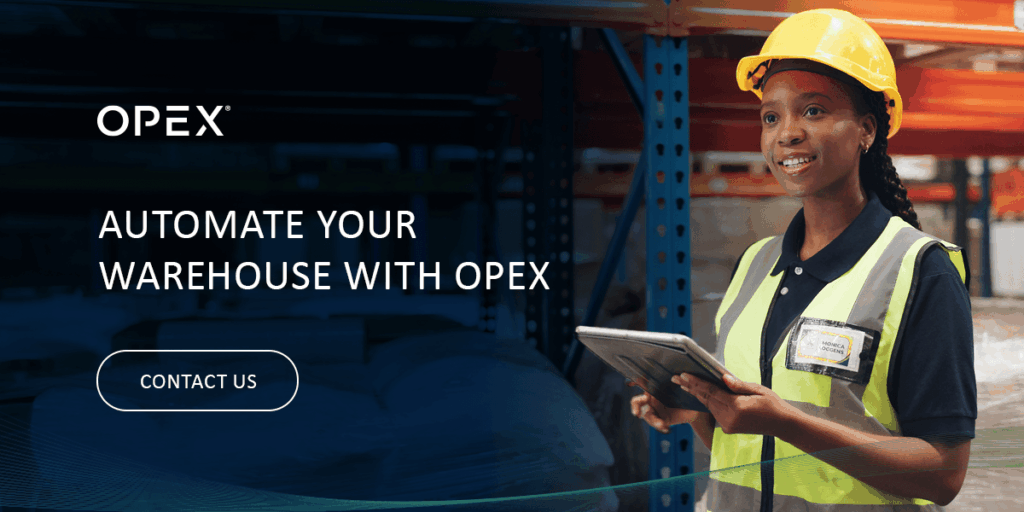The Power of Partnership: Collaborating for Supply Chain Optimization and Growth
5 min read
60-Second Summary
Strong supply chains aren’t built in isolation. By working closely with suppliers, 3PLs, tech vendors, and transport partners, UK logistics firms and warehouse operations can reduce costs, increase speed, and build resilience. From shared transport and joint forecasting to integrated platforms and vendor-managed inventory, collaboration unlocks smarter, more efficient operations.
Introduction
No logistics operation thrives in a vacuum. From suppliers and transport providers to third-party logistics (3PL) partners and technology vendors, today’s most successful logistics and warehousing businesses in the UK understand that strategic collaboration is essential for growth. In a sector under constant pressure to reduce costs, speed up delivery, and adapt to demand volatility, working in silos simply isn’t sustainable.
Partnerships offer a unique opportunity to streamline operations, increase visibility, and share the burden of risk and innovation. Whether it’s coordinating transport with neighbouring businesses or sharing forecast data with suppliers, collaborative strategies open the door to smarter, more agile logistics networks. Businesses that embrace these partnerships often see improvements in operational efficiency, customer satisfaction, and sustainability performance.
This blog explores five proven partnership strategies logistics professionals in the UK can adopt to strengthen their supply chains. Each one supports a more integrated, responsive, and cost-effective operation. Partnership should be high on your agenda if you’re looking to build resilience and long-term value into your logistics strategy.

Vendor Managed Inventory (VMI) – Empowering Your Suppliers
Vendor mManaged Iinventory (VMI) is a collaborative strategy that allows suppliers to manage stock levels on your behalf using real-time inventory data. This model shifts the traditional buyer-supplier dynamic by empowering suppliers to replenish goods when needed, rather than waiting for a manual purchase order. In doing so, it reduces warehouse teams’ administrative workload while improving stock availability and accuracy.
VMI can be a game-changer for UK warehouses in the UK dealing with high-turnover SKUs or consistent replenishment cycles. Suppliers get more visibility into downstream demand, enabling them to plan their production and logistics more effectively. Meanwhile, the warehouse benefits from a more stable supply of goods and reduced stockouts or excess inventory. This balance improves service levels and optimises working capital by reducing the need to hold safety stock.
Of course, VMI requires trust and transparency. Both parties must agree on KPIs, performance thresholds, and communication protocols. However, when implemented correctly, it creates a win-win relationship that strengthens the entire supply chain. For businesses scaling or managing seasonal fluctuations, VMI can also provide the agility to meet changing demand without overburdening internal systems.
Shared Transport and Consolidation – Reducing Costs and Emissions
Transport represents a significant cost centre for UK logistics firms, particularly in the context of last-mile delivery, where volumes are high, distances short, and expectations steep. Shared transport and load consolidation offer a practical and sustainable solution to these challenges. By collaborating with other local businesses or partners to pool deliveries, companies can increase vehicle fill rates, reduce fuel usage, and cut per-mile costs significantly.
This model works particularly well in urban areas where traffic congestion and low-emission zone charges increase the cost and complexity of delivery. By coordinating routes and delivery schedules, businesses not only achieve cost savings but also contribute to their environmental goals. Reduced vehicle mileage directly translates into lower carbon emissions, supporting ESG reporting and helping to meet Net Zero commitments.
Shared transport is also flexible: it can be structured around recurring routes, high-volume lanes, or seasonal peak periods. Logistics hubs, cooperatives, or third-party aggregators can help facilitate these networks, using routing software and load-matching platforms to streamline operations. However, success depends on strong communication, aligned service standards, and mutual trust among partners.
For many UK logistics operators, particularly small to medium-sized enterprises (SMEs), shared transport is not just a cost-cutting tactic but a strategic move towards greener, more efficient distribution networks. It’s an initiative that delivers operational wins while aligning with broader sustainability ambitions.
Joint Forecasting and Planning – Improving Accuracy, Reducing Waste
Inaccurate demand forecasts and siloed planning are among the top causes of inefficiency and waste in supply chains. Joint forecasting and planning with suppliers, distributors, or key customers can significantly improve the accuracy of predictions and alignment across the supply chain. When partners share data on historical demand, promotional plans, and expected fluctuations, everyone benefits from improved visibility and reduced uncertainty.
This collaborative approach enables more efficient production schedules, better inventory positioning, and faster response times to changes in demand. It also reduces the need for costly safety stocks or expedited shipping, as businesses are better prepared to meet demand with the right inventory at the right time.
In the UK, where supply chains are often impacted by seasonal fluctuations, labour availability, or regional disruptions, joint planning offers a vital buffer against volatility. It ensures that logistics teams aren’t caught off guard during Black Friday, peak delivery periods, or supplier shortages. And when integrated with advanced planning tools or forecasting software, this model becomes even more powerful.
Ultimately, joint planning strengthens trust and coordination between supply chain partners. It replaces guesswork with data-driven decisions and transforms forecasting from a reactive to a strategic function. The result? Leaner operations, fewer stockouts, and happier customers.
Integrated Technology Platforms – One Source of Truth
Integrated technology platforms are the backbone of modern supply chain collaboration. By connecting systems across suppliers, logistics providers, and warehouses, including WMS (warehouse management systems), TMS (transport management systems), and ERP platforms, businesses can establish a single source of truth that enhances visibility and decision-making.
When partners have access to shared data streams, such as live order statuses, inventory levels, delivery windows, and performance KPIs, they can respond more quickly to disruptions and plan operations more effectively. This kind of real-time collaboration reduces lag time, lowers error rates, and enables faster customer service.
Businesses with logistics operations in the UK are increasingly adopting cloud-based platforms, APIs, and EDI (electronic data interchange) protocols to achieve these outcomes. Whether you’re integrating with a 3PL, syncing with suppliers, or collaborating with upstream customers, having a unified platform prevents the disconnects that often plague fragmented supply chains.
The benefits extend beyond operational efficiency. Shared technology fosters accountability and trust – each partner can see how their performance impacts the rest of the chain. It also supports compliance and auditability, ensuring that traceability and data standards are maintained across the board.
As logistics ecosystems become increasingly complex, investing in integration is no longer optional, it’s foundational for long-term agility and competitiveness.
In uncertain economic times, 3PLs also provide vital flexibility, enabling firms to scale their operations up or down quickly in response to changing demand. And for companies pursuing ESG targets, many 3PLs now offer sustainable logistics options, including electric fleets and carbon-offset programmes.
Strategic 3PL Partnerships More Than Just Storage
Gone are the days when third-party logistics (3PL) providers were simply warehousing space and a few forklifts. Today’s 3PLs are strategic partners, offering advanced technology, real-time analytics, multimodal transport solutions, and even value-added services such as kitting, returns processing, and same-day delivery.
Collaborating with a forward-thinking 3PL allows businesses to scale faster, optimise cost structures, and improve service levels. Rather than investing in infrastructure and technology themselves, companies can leverage their 3PL’s assets and expertise. For many UK logistics firms, especially SMEs or those entering new markets, this partnership model offers a lower-risk path to growth.
But to truly unlock value, the relationship must go beyond a transactional service contract. Strategic 3PL partnerships involve joint planning sessions, shared key performance indicators (KPIs), real-time visibility tools, and continuous improvement initiatives. By working collaboratively on process design, capacity planning, and performance optimisation, both parties can drive measurable results.
In uncertain economic times, 3PLs also provide vital flexibility, enabling firms to scale their operations up or down quickly in response to changing demand. And for companies pursuing ESG targets, many 3PLs now offer sustainable logistics options, including electric fleets and carbon-offset programmes.
Selecting the right 3PL, and investing in the relationship, is one of the most powerful ways a logistics business can stay competitive and resilient.
Collaboration as a Competitive Advantage
In a logistics landscape shaped by rapid change, rising costs, and tightening margins, collaboration has evolved from a luxury to a critical success factor. UK warehousing and logistics firms that embrace supply chain partnerships are better equipped to adapt, optimise, and grow. They gain access to more accurate information, share risks more effectively, and drive down inefficiencies across the board.
From real-time inventory coordination with suppliers to shared transport initiatives and integrated digital platforms, the power of partnership unlocks new levels of agility and performance. It also builds resilience, giving firms the confidence and capacity to navigate peak seasons, economic shocks, and customer shifts without missing a beat.
Partnering with OPEX A Trusted Ally in Supply Chain Innovation
If you’re considering how to build or strengthen collaborative supply chain models, partnering with the right technology provider is a crucial step. For more than 50 years, OPEX® has been a trusted partner to logistics, warehousing, and fulfilment organisations around the world. Our approach goes beyond delivering advanced automation solutions. We focus on long-term partnerships that evolve with your business.
OPEX offers a full spectrum of high-performance systems, including the Perfect Pick®, Sure Sort® X, and Xtract™ automated technologies, engineered to boost efficiency, reduce errors, and optimise fulfilment processes. But what truly sets us apart is our commitment to reliability and ongoing support. Through our comprehensive service programmes, we offer tailored maintenance plans, remote diagnostics, on-site engineering support, and proactive system health monitoring. These services are designed not only to maintain uptime, but also to improve operational performance as your business continues to grow.
Whether you’re integrating automation into an existing facility or building a next-generation fulfilment centre from the ground up, OPEX provides the tools, insight, and partnership you need to succeed. Our global support network and deep expertise in supply chain challenges mean we’re always ready to help, from planning and deployment to day-to-day performance optimisation.
Looking for a technology partner who brings both innovation and decades of dependability? Let’s start a conversation about how OPEX can support your strategic goals and help you realise the full potential of collaborative supply chain operations.
Other Resources You Might Find Helpful
NEXT LEVEL AUTOMATION
Unlock Operational Efficiency with OPEX
OPEX is powering the future of automation. Contact us to learn more about how our vertically integrated automated solutions can help take your business to new heights.



